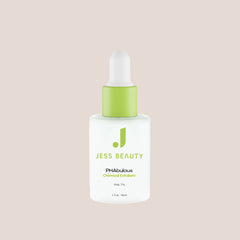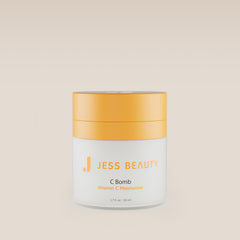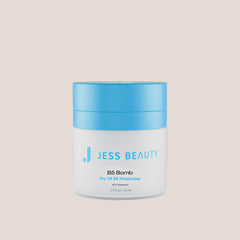Autumn is calling, leaves are falling
We’ve officially transitioned into autumn, where the days of sun, beach, and carefree vibes have bid us farewell. Now it’s time for cozy sweaters, warm cups of coffee, and those chilly, refreshing walks that make us feel alive. With this shift, though, your skin might be giving you signals that it’s not so thrilled about the seasonal change. So, what exactly happens to our skin when the weather turns cold? And most importantly, how can we keep it looking its best?
As the air gets crisper and the leaves turn golden, some questions naturally come to mind. Why does my skin react this way? What can I do to prevent seasonal woes? Let’s take a look at some of the most common questions that come up with the changing seasons.
Why do I get bad skin when the seasons change?
If you’ve noticed that your skin goes haywire during seasonal transitions, there’s actually a good reason for it. When we move from warm, humid weather to cooler, drier air, our skin barrier can get confused and compromised. Here’s why:
-
Dehydration: As temperatures drop, humidity levels plummet too. This makes the air drier, which pulls moisture from your skin and leaves it looking dull and feeling tight. The skin’s ability to retain water decreases in colder weather, leading to flakiness and a rough texture.
-
Sudden temperature changes: The constant shift between indoor heating and the chilly outdoor air can shock your skin, leading to redness, dryness, or sudden breakouts. It’s like your skin can’t figure out how to adapt, so it reacts by flaring up or drying out.
-
Environmental changes: The crisp wind that feels so refreshing? It’s actually stripping your skin of its natural oils, leaving it vulnerable and more sensitive. Wind exposure can create micro-tears in the skin barrier, causing irritation and dryness.
These factors can make your skin look and feel different from what you’re used to, which is why adjusting your skincare routine is so important as the seasons change.
Can your skin type change with the seasons?
Your skin type is the same all year round, but as the seasons change, the weather and humidity do their own thing and you may experience an imbalance or slight change.
-
Normal to dry: If your skin is usually balanced, you might find that it feels drier or even starts showing rough patches during autumn and winter.
-
Oily to combination: Those with oily skin might notice that certain areas, like the cheeks, become drier while the T-zone remains oily. This creates a combination skin situation that requires more tailored care.
-
Sensitive becomes ultra-sensitive: If you have sensitive skin, you might notice increased redness, itching, or stinging. The colder air can make your skin hyper-reactive to products that were perfectly fine in summer.
What’s more, if your skin barrier is already compromised, the symptoms can be even more pronounced, making it essential to switch up your skincare approach.
Why does my skin peel when the seasons change?
Peeling skin is one of the most common complaints as we move into fall and winter. This happens when your skin barrier is weakened and the top layer can’t hold onto moisture effectively. Here’s why it’s happening:
- Rapid moisture loss: When the air becomes drier, your skin loses water more quickly, which leads to flakiness and peeling. The skin's natural exfoliation process may speed up, causing the shedding of the top layers at an accelerated rate.
-
Barrier compromise: If your skin’s natural barrier is damaged, it’s less effective at keeping environmental irritants out and moisture in. This leads to visible peeling and discomfort.
Tips for combating seasonal skin changes
Want to navigate the seasonal shift without the drama? Here’s what you should do:
-
Exfoliate gently: Use PHAs (polyhydroxy acids). They’re like the friendly cousin of AHAs and BHAs and help slough off dead skin without causing irritation. PHAs are perfect for sensitive skin types or anyone looking for a mild exfoliation that won’t strip away moisture.

The PHAbulous Chemical Exfoliant is the upgrade your skincare routine needs. PHAs delicately remove dead skin cells without the harshness of typical exfoliants, and with macadamia seed oil, your skin feels soft and hydrated post-exfoliation. It’s perfect for maintaining a fresh, autumn glow.
-
Layer up your moisturizer: As the air turns crisp, swap out your lightweight summer lotion for a rich, hydrating cream.
Go for a moisturizer like C Bomb Vitamin C Moisturizer, which combines the brightening power of Vitamin C with panthenol to lock in moisture and protect against environmental stressors. This helps create a barrier that keeps your skin hydrated and plump, even on those chillier days.
If you’re using the PHAbulous Chemical Exfoliant, complete your skincare routine with the B5 Bomb Pro Vit B5 Moisturizer. Packed with 20% panthenol, this lightweight, vegan formula provides intense hydration, locks in moisture, and leaves your skin feeling soft and nourished. Perfect for day and night, it’s your go-to moisturizer for all skin types.
-
Including Vitamin C and hyaluronic acid in your routine : Keep using Vitamin C to maintain that glow and protect your skin from free radicals and environmental damage. It helps brighten skin and can fade dark spots left from summer sun exposure. Also add hyaluronic acid , It draws moisture into the deeper layers and locks it in, making sure your skin feels hydrated even as the temperatures drop.
-
Sunscreen is non-negotiable: Just because the sun is playing hide and seek behind the clouds doesn’t mean you can skip SPF. UV rays are sneaky and can still cause damage even when it’s gloomy. Our go-to? The Sun Drops Sunscreen Oil. It’s lightweight, absorbs quickly, and doesn’t leave that annoying white cast. Plus, it’s packed with ingredients like camellia sinensis and squalane to add hydration while protecting your skin. Perfect for keeping your skin safe and radiant through fall.
-
Hydrate your body too: Your face isn’t the only area that feels the effects. Moisturize your entire body, especially after summer, when dead skin cells and sun damage can linger.
- Stay hydrated from within: Drinking plenty of water helps support your skin’s natural barrier function. While external hydration is key, keeping up your water intake supports overall skin health.
How to keep your skin barrier happy as the temperature drops
The skin barrier keeps moisture in and harmful stuff out. But when the temperature starts dipping, this barrier can weaken. Here’s what happens:
-
Increased moisture loss: The barrier struggles to keep water locked in, leading to dry, rough skin. You may notice your skin feeling tight or looking less plump.
-
Heightened sensitivity: Products you usually love might suddenly cause a stinging or burning sensation. This can make skincare a tricky game as you adjust to what works for your skin during this time.
To keep your barrier strong:
-
Use hydrating serums: Look for ingredients like hyaluronic acid or niacinamide that attract moisture to the skin. Layer them under your moisturizer for an added boost.
-
Avoid harsh cleansers: Choose a gentle, hydrating cleanser to avoid stripping your skin of its natural oils. Cream and oil-based cleansers are great options for maintaining moisture.
Because healthy skin never goes out of season
Adjusting your skincare routine to align with the change of seasons can keep your skin feeling happy, healthy, and glowing through autumn and beyond. Remember, crunchy leaves and autumn breeze might be soothing for the soul, but taking care of your skin is what keeps it at ease.










